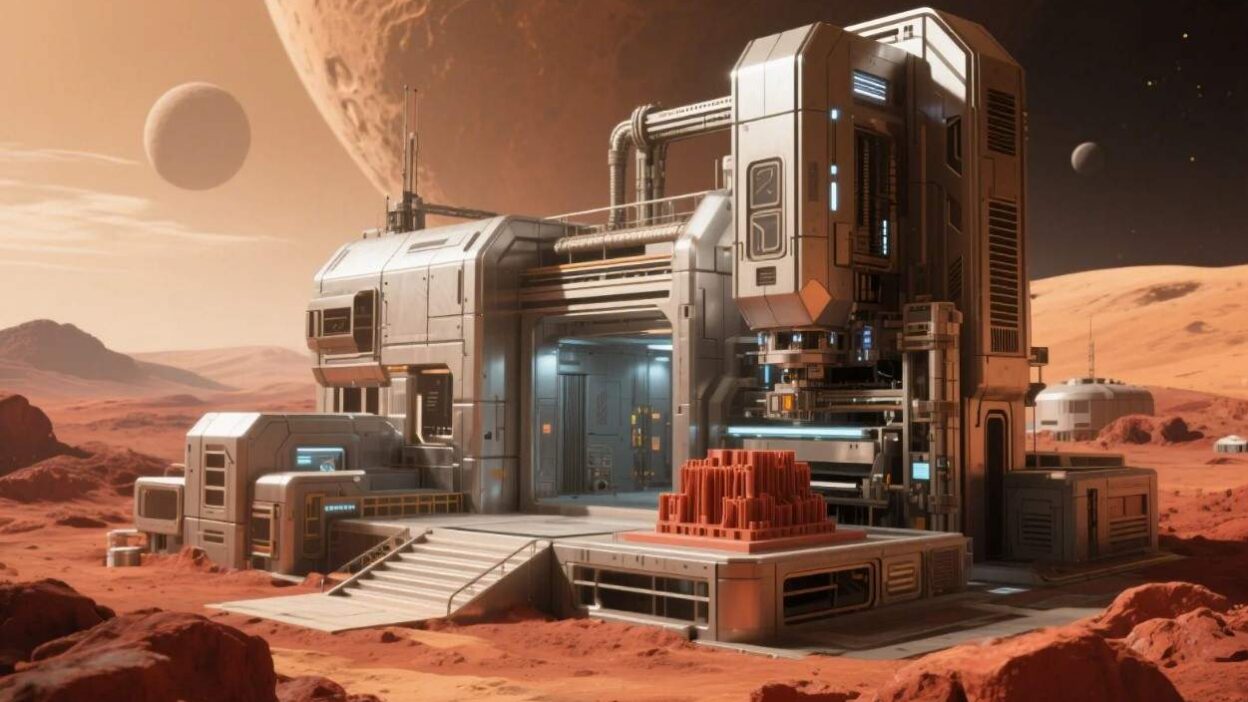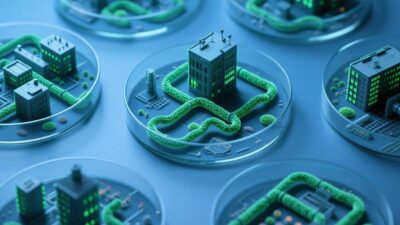Building Self-Sufficient Futures Beyond Earth
The Need for Autonomy in Space Colonies
Off-world colonies—whether on the Moon, Mars, or beyond—face a critical challenge: sustainability. Resupply missions from Earth are costly, slow, and unreliable. Self-replicating 3D printers—machines that can print their own components using local materials—offer a revolutionary solution. By enabling colonies to manufacture tools, spare parts, and even new printers autonomously, these technologies pave the way for self-sufficient, long-term habitation.
How Do Self-Replicating 3D Printers Work?
Self-replicating 3D printers rely on three core capabilities:
- Local Material Sourcing: They use raw materials available in the colony’s environment, such as lunar regolith (for the Moon) or Martian soil (for Mars). These materials are often processed into printable feedstocks (e.g., sintered powders, extrudable pastes).
- Self-Assembly: The printer can fabricate its own parts—gears, nozzles, or even entire printer frames—using 3D printing technologies like selective laser sintering (SLS) or fused deposition modeling (FDM).
- AI-Driven Optimization: Machine learning algorithms refine printing parameters (e.g., layer thickness, temperature) to adapt to material variability, ensuring consistent quality.
For example, a lunar colony’s printer might use regolith mixed with a binder to print a new printer nozzle, enabling it to replicate itself repeatedly.
Applications in Off-World Colonies
- Habitat Construction: Printers can build walls, floors, and roofs using regolith-based materials, reducing reliance on pre-launched supplies.
- Tool & Equipment Manufacturing: Spare parts for rovers, life support systems, or medical devices are printed on-demand, minimizing downtime.
- Scientific Research: Printers produce specialized lab equipment (e.g., microscopes, sample analyzers) tailored to the colony’s research goals.
- Expansion: Printers can replicate themselves, enabling colonies to scale infrastructure (e.g., additional habitats, greenhouses) exponentially.
Challenges & Limitations
- Material Constraints: Regolith or Martian soil may contain impurities (e.g., toxic elements) that require pre-processing, adding complexity.
- Energy Demands: 3D printing is energy-intensive; colonies must rely on solar, nuclear, or in-situ power sources (e.g., Martian methane).
- Reliability: A single printer failure could stall replication, risking colony resilience. Redundancy (multiple printers) is critical.
- Scalability: Ensuring printers can produce high-quality parts at scale—critical for building large habitats or industrial facilities.
Ethical & Logistical Considerations
- Ownership & Governance: Who controls the printers? Colonies must establish rules to prevent misuse (e.g., hoarding parts) and ensure equitable access.
- Environmental Impact: Mining regolith or altering Martian soil could disrupt local ecosystems (e.g., dust storms, geological stability).
- Dependence on Earth Tech: Early printers may still rely on Earth-manufactured components (e.g., lasers, sensors), requiring phased self-sufficiency.
The Future: Toward Fully Autonomous Colonies
Advancements in materials science (e.g., pure regolith processing), AI (adaptive printing algorithms), and energy systems (compact nuclear reactors) are driving self-replicating printers closer to reality. Future colonies could see:
- Closed-Loop Systems: Printers recycle old parts into new feedstock, eliminating waste.
- Inter-Colony Collaboration: Shared blueprints and standardized parts enable cross-colony resource pooling.
- Human-Machine Synergy: Robots assist printers in mining, assembly, and maintenance, enhancing efficiency.
Printing the Future of Space Colonization
Self-replicating 3D printers are not just tools—they are the backbone of sustainable off-world communities. By enabling colonies to manufacture what they need, when they need it, these technologies reduce dependence on Earth and unlock the full potential of space habitation. As innovation accelerates, self-replicating printers will transform distant worlds from fragile outposts into thriving, self-sufficient societies.



